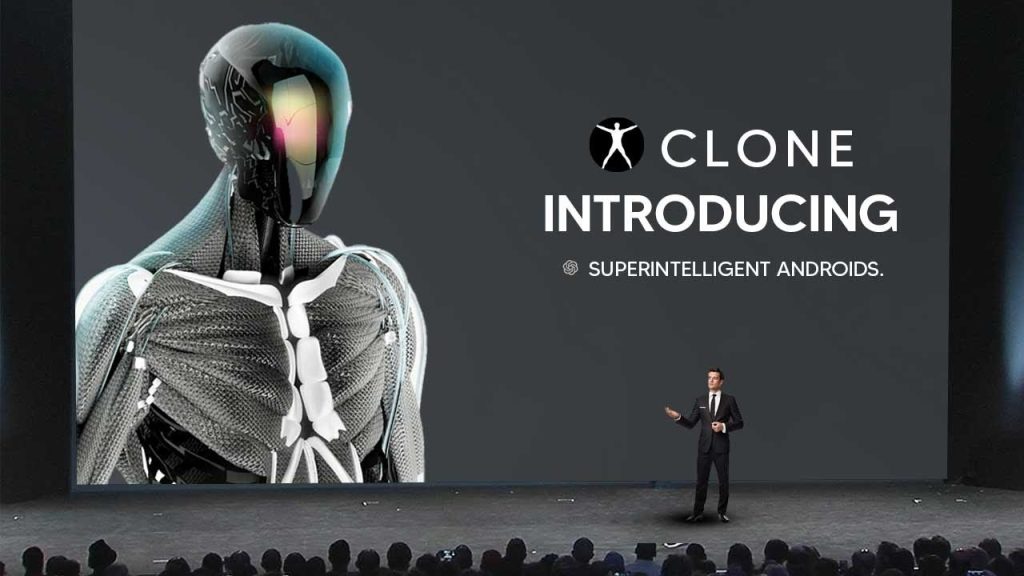In the fast-evolving world of robotics, Clone Robotics is pushing the boundaries of what’s possible with their latest creation: a humanoid android that moves and functions closer to a human than ever before. Clone Robotics has focused on designing highly advanced humanoid robots with life-like movement, showcasing innovative technologies, such as artificial muscles, that allow for smoother, more realistic motions compared to traditional robotics.
Advanced Robotic Capabilities: Beyond Traditional Movements
One of the most striking aspects of Clone Robotics’ android is its lifelike movement. Traditional robots rely on motors and rigid components, often resulting in jerky, mechanical motion. In contrast, this new android’s artificial muscles mimic human tendons and muscles, allowing it to move with natural fluidity. This breakthrough not only allows for realistic limb motions but also provides the android with a full range of dexterous movements. Imagine a robot lifting a delicate object with one hand while stabilizing it with the other—tasks that require precision and adaptability.
The Power of Artificial Muscles in Robotic Arms and Shoulders
The development of artificial muscles marks a pivotal shift in robotic technology. Clone Robotics has meticulously engineered muscles within the android’s arms, shoulders, and torso to achieve flexibility and strength similar to the human body. These robotic arms are controlled by a sophisticated system of valves and actuators, enabling precise, lifelike movements. In past robotic designs, energy efficiency was a significant challenge; however, this model operates with incredible power density, making it both powerful and efficient. For instance, it can handle tasks requiring high torque and pressure, such as lifting and holding weights, all with an energy output comparable to what humans use.

Innovative Robotics for Real-World Applications
The versatility of Clone Robotics’ android opens up a multitude of potential applications, particularly in environments designed for human interactions. This bimanual android has been designed with the flexibility needed for tasks that require precise manipulation, such as assembling components in a manufacturing setting or assisting with medical procedures. With enhanced joint design, it can rotate its shoulders, extend its arms, and even tilt its head, allowing it to work in close coordination with people.
Applications in Manufacturing and Healthcare The seamless, human-like motion makes this robot ideal for delicate handling, which could prove revolutionary in industries like healthcare, where precision is essential. Imagine an android that assists in surgery or delicate assembly processes where human-like flexibility is crucial. Its artificial muscles are not only durable but capable of handling repeated tasks without wear and tear, giving it an edge over traditional robots that rely on mechanical parts prone to breakdowns.
A Future of Humanoid Robotics
With Clone Robotics at the forefront of developing musculoskeletal androids, the potential applications are boundless. This technology could lead to more sophisticated teleoperation systems, allowing human operators to control these robots from afar. Whether in hazardous environments, remote healthcare, or even daily household tasks, these androids could eventually assist humans in ways previously confined to science fiction.
The company envisions a future where such robots may have broader societal impacts, from aiding in rehabilitation therapies to performing complex tasks that require a combination of dexterity, strength, and adaptability. By replicating the intricacies of human muscle and joint movements, Clone Robotics is not only advancing robotics but also redefining the boundaries of human-machine interaction.
In conclusion, Clone Robotics has achieved a major milestone with its lifelike android, offering a glimpse into the future of robotics where machines mimic human form and function to an unprecedented degree. As the technology matures, we may soon see these intelligent, adaptive robots become indispensable parts of our daily lives, forever changing how we interact with technology.


